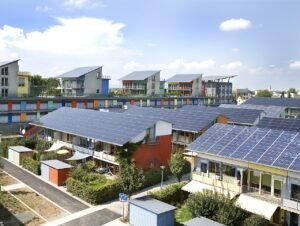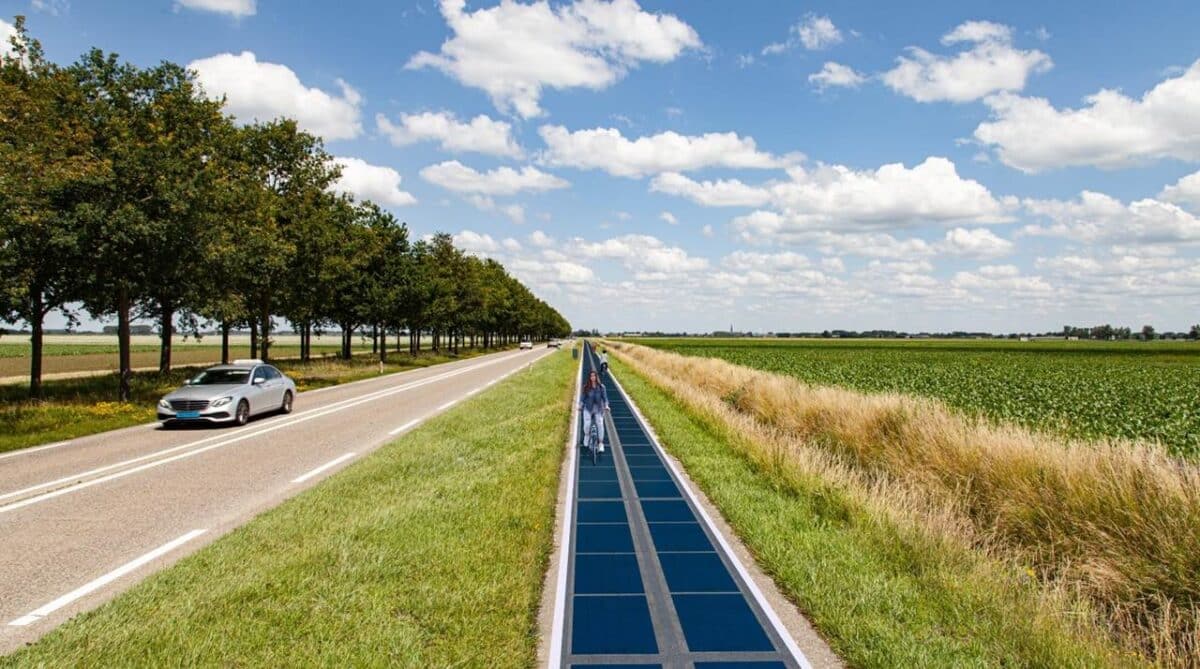Maria Papaevripidou (Environmental Policy Officer)
Admittedly, as humans, we have done enough damage to our planet already and it is about time we start looking for the best solutions to restore it. Solutions that will work in favour of the planet and not at its expense.
As the climate crisis worsens, fueled by the burning of fossil fuels (coal, oil, and natural gas) becomes, it is becoming increasingly crucial to find alternatives to fossil fuels. And what is better than using energy sources that are endless and abundant, like solar energy? Fortunately, sunlight in Cyprus can be harnessed to generate electricity through solar panels. But with the increasing demand for solar energy, there is also an increasing demand for available land for it to be installed. How can we find the balance between solar energy generation and other land uses?
Solar energy is a clean and renewable source of power, meaning that it produces little to no greenhouse gas emissions. Hence it is a step towards mitigating climate change and reducing air pollution. By using solar power, the carbon footprint of Cyprus can be reduced and help come closer to the EU Renewable Energy Source (RES) share goal of 42.5% by 2030. Currently, 17.2% of Cyprus’ total energy mix is generated from renewable sources, with solar energy accounting for 11.9% of it4.Considering that Cyprus has great potential in harnessing solar energy and in the context of an ambitious EU RES target, it is imperative to amplify the production of energy from renewable sources to meet the evolving energy demands of the island.
However, creating large-scale Photovoltaic Parks (PV) requires a large land area. As a result, the competition with other land uses, such as agriculture, increases. Therefore, specific regulations and guidelines should be in place to determine the sustainability and the location of PV parks. Without these measures, the loss of land may lead to biodiversity loss, ecosystem disruption, and reduction of food production. At this moment, in Cyprus, several areas have been strictly excluded from installing any renewable energy technology as there is a spatial planning strategy already in place. Those include all Natura 2000 sites, wetlands, state forests and seashores.
As a result, and due to the compact size of Cyprus, most of the remaining available land is agricultural land. This means that by establishing PV parks in certain areas, we risk compromising our primary resources. When installing conventional solar panels, the soil is compacted and there is limited sunlight penetration which can affect soil quality and impact the surrounding ecosystems1. Furthermore, solar panels cast shadows on the neighbouring land thus affecting the productivity of nearby agricultural areas or vegetation. Moreover, with large-scale installations, the visual aesthetics of the surrounding landscape may be altered significantly, especially in areas with natural beauty.
With that in mind, ways need to be found to optimise land use for solar panels, thus maximising the energy generation potential whilst minimising the impact on other land uses.
One of the ways to achieve that is to combine agriculture and RE, termed agrivoltaics. There are already pilot agrivoltaic projects running in collaboration with the Agricultural Research Institute, which investigates allowing the use of land for energy generation and food production. Additional benefits of agrivoltaics include the lower temperatures beneath the panels which generates less heat stress and evaporation from the soil and thus reduced water demand.
Another example could be PV installation companies entering into agreements with landowners for shared land use. In these cases, multiple activities such as agriculture or grazing, can coexist with solar panels on the same land. Examples of successful installations of agrivoltaics can be found in the Netherlands, France Spain and in China. In the Netherlands, the project focuses on the cultivation of multiple crops including wheat, potato, celery, and blueberries. In Greece, the use of sheep has been adopted at PV installations all over the country to control the vegetation under the solar panels, ensuring that the PV park becomes a natural firebreak.

Additionally, brownfields and landfills are sites where the soil might already be contaminated, which means that these can be exploited to generate solar power, sparing fertile land. Shifting our focus from rural areas, one can see an even greater potential in solar power generation in utilizing our urban environment. Walking through our cities one can see plenty of unutilised spaces for solar panels to be installed. One example is the rooftops of public and private buildings. By using the empty space on building rooftops, we can reduce the number of PV Parks needed. Additionally, PV installations can be integrated into existing infrastructure such as parking lots, bus stops, sound barriers and even roads. This is exemplified by the case of the Netherlands, whereby adopting a vertically orientated installation of solar panels, 400m-highway-sound barriers were used to not only minimise noise but also to generate RE. Next to this, in South Korea, there is a “bike highway” in the middle of a 32km highway shaded by solar panels while in the Netherlands Solar panels are embedded in a bike road, creating a solar road. Similarly, China has built a 1km solar highway which can generate enough energy to power 800 homes.
By installing solar panels in multiple locations, distributed solar energy systems are implemented with energy then collected in microgrids. This way the need for large-scale PV parks is reduced and the resilience of the energy system is enhanced2. As an additional measure to achieving grid stability, solar power storage batteries can be installed. With batteries, excess electricity generated from solar panels can be stored for later use which reduces reliance on the grid and provides a degree of energy independence.
To conclude, we need to reconsider the number of PV parks that are necessary to increase our Renewable Energy generation capacity whilst preserving our valuable resources and biodiversity in Cyprus. We need to have a clear picture of how many PV parks are needed, considering all other alternatives mentioned above. Our island is sun-blessed, and we do have the potential to become 100% powered by renewables. But this should not go at the expense of our biodiversity protection goals and the utilisation of our precious agricultural land. The above-mentioned alternative solutions to large PV parks should thus be further explored by the government as a solution to maximize land efficiency and cover our future energy needs in the most sustainable way possible.
1 Li, C., Liu, J., Bao, J., Wu, T., & Chai, B. (2023). Effect of Light Heterogeneity Caused by Photovoltaic Panels on the Plant–Soil–Microbial System in Solar Park. Land, 12(2), 367. https://doi.org/10.3390/land12020367
2TheU.S.DepartmentofEnergy. (nd). Solar Integration: Distributed Energy Resources and Microgrids. US: Solar Energy Technologies Office. Retrieved from https://www.energy.gov/eere/solar/solar-integration-distributed-energy-resources-and-microgrids
3Tsoutsos, T., Frantzeskaki, N., & Gekas, V. (2005). Environmental impacts from the solar energy technologies. Energy Policy, 33(3), 289-296. Retrieved 7 19, 2023, from https://sciencedirect.com/science/article/pii/s0301421503002416
4ΔΣΜΚ. (2022). ΔΙΕΙΣΔΥΣΗ ΑΝΑΝΕΩΣΙΜΩΝ ΠΗΓΩΝ ΕΝΕΡΓΕΙΑΣ (ΑΠΕ) ΣΤΟ ΣΥΣΤΗΜΑ ΗΛΕΚΤΡΙΚΗΣ ΕΝΕΡΓΕΙΑΣ ΤΗΣ ΚΥΠΡΟΥ. Διαχειριστής Συστήματος Μεταφοράς Κύπρου. Κύπρος: Διαχειριστής Συστήματος Μεταφοράς Κύπρου. Retrieved from https://tsoc.org.cy/electrical-system/energy-generation-records/res-penetration/




